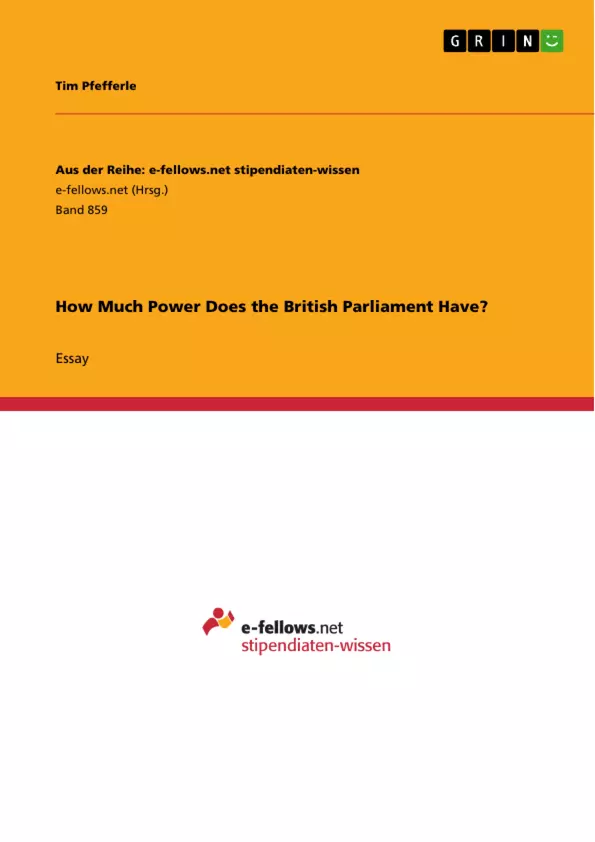An analysis of the powers enjoyed by the British House of Commons, using a three-dimensional framework of power. Comparisons to other parliaments are employed throughout to highlight distinctions. The essay concludes that the House of Commons does not dispose of extensive powers, and remains powerful when compared to its counterparts in other countries.
Inhaltsverzeichnis (Table of Contents)
- Introduction
- Concepts of Power
- Coercive and Persuasive Power
- Agenda-Setting Power
Zielsetzung und Themenschwerpunkte (Objectives and Key Themes)
This essay examines the power of the British Parliament, specifically the House of Commons, from a multi-dimensional perspective. It aims to analyze the extent to which the parliament holds real power in the face of executive dominance. The essay utilizes the work of Dahl, Bachrach, Baratz, and Lukes to develop a framework for understanding the various dimensions of power.
- Legislative Power and Autonomy
- Agenda-Setting Power of the Executive
- Role of Private Members and Backbenchers
- Comparison of the House of Commons to other Legislatures
- Constraints on Parliamentary Power
Zusammenfassung der Kapitel (Chapter Summaries)
The first section introduces the essay's objective and outlines the multi-dimensional framework of power that will be employed. It defines the three dimensions of power: coercive and persuasive power, agenda-setting power, and institutional power. The second section delves into the first dimension of power, focusing on the legislative power of the House of Commons. It examines the limitations placed on parliament's ability to influence legislation, particularly the executive's monopoly over the introduction of financial bills. The essay also explores the role of private members' legislation and the potential for increased backbencher autonomy. The third section analyzes the government's agenda-setting power within the British Parliament. It discusses the government's control over the parliamentary agenda, committee system, and the amount of debate on bills. The essay further explores the constraints placed on the House of Commons by the executive, such as the limited time allotted for debates and the government's ability to restrict amendments.
Schlüsselwörter (Keywords)
This essay focuses on the power of the British Parliament, specifically the House of Commons, within a multi-dimensional framework. Key concepts include: parliamentary power, executive dominance, legislative autonomy, agenda-setting, institutional power, private members' bills, backbenchers, and comparative analysis of legislatures.
- Quote paper
- Tim Pfefferle (Author), 2013, How Much Power Does the British Parliament Have?, Munich, GRIN Verlag, https://www.grin.com/document/265909



